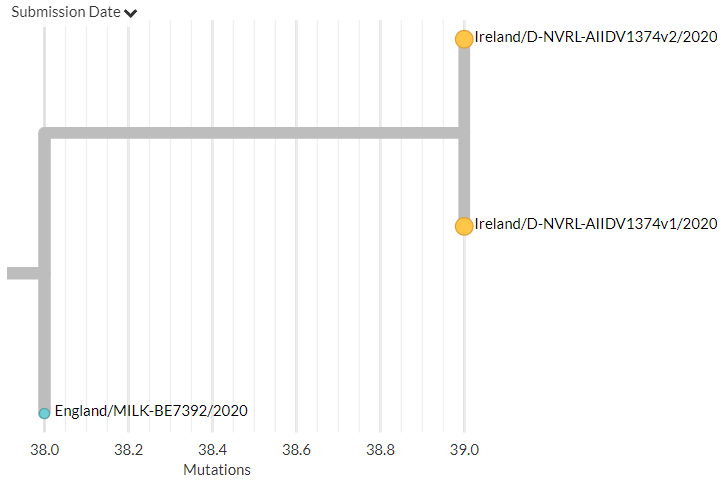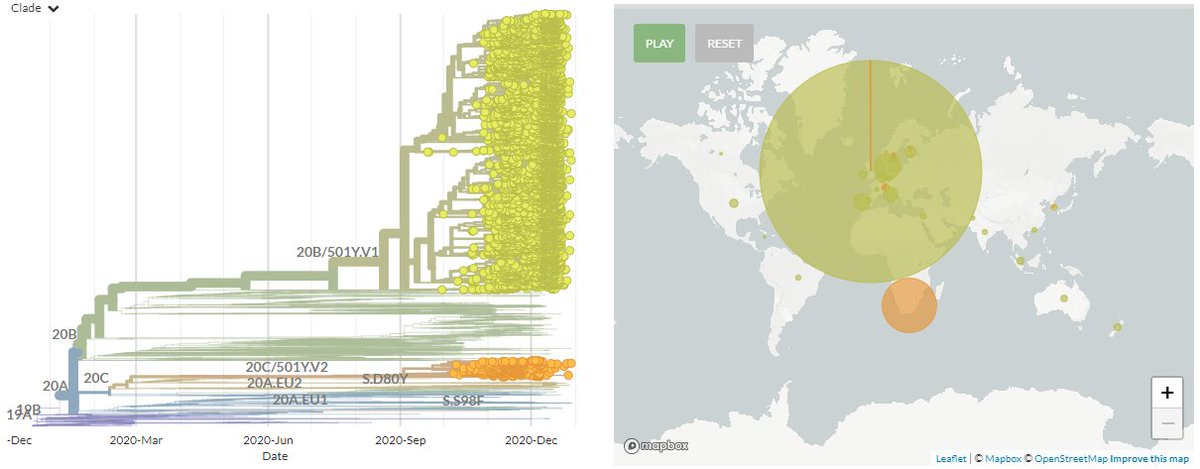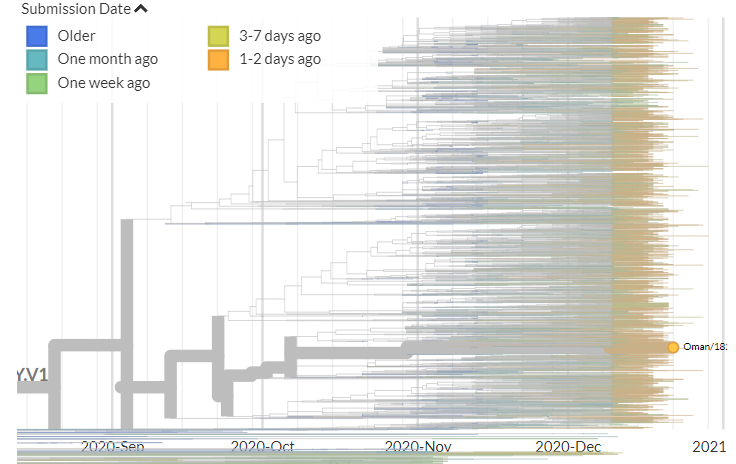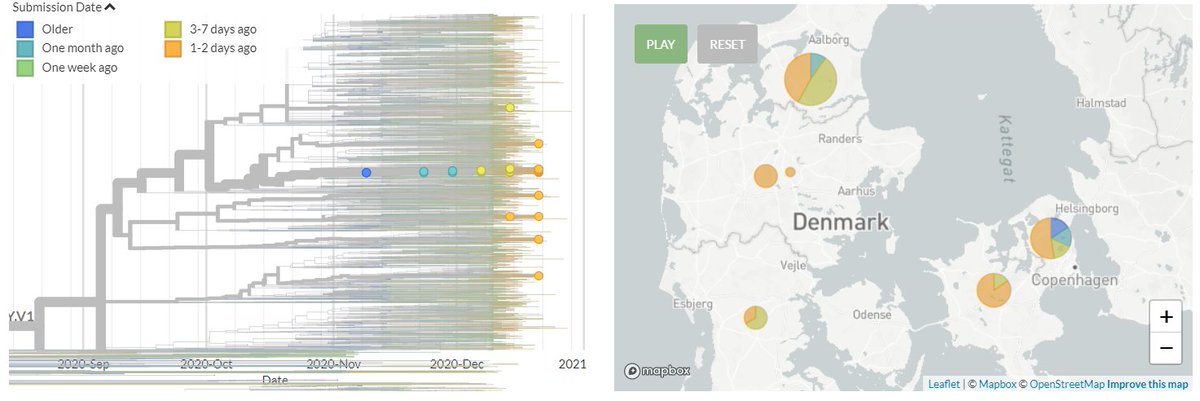
Happy Tuesday! The latest focal S:N501 build is now updated with sequences from 11 Jan.
There are 101 new sequences in the 501Y.V1 (B.1.1.7 #b117) & 501Y.V2 variants.
Additionally, I'll include some updates on S:E484K in this thread.
1/20
nextstrain.org/groups/neherla…
There are 101 new sequences in the 501Y.V1 (B.1.1.7 #b117) & 501Y.V2 variants.
Additionally, I'll include some updates on S:E484K in this thread.
1/20
nextstrain.org/groups/neherla…

There are 97 new non-UK sequences in 501Y.V1, including the first sequences in the cluster from Slovakia, Mexico, & Belgium, plus additional sequences from the Netherlands, Denmark, Australia, Spain, Ireland, & Sweden.
2/20
2/20
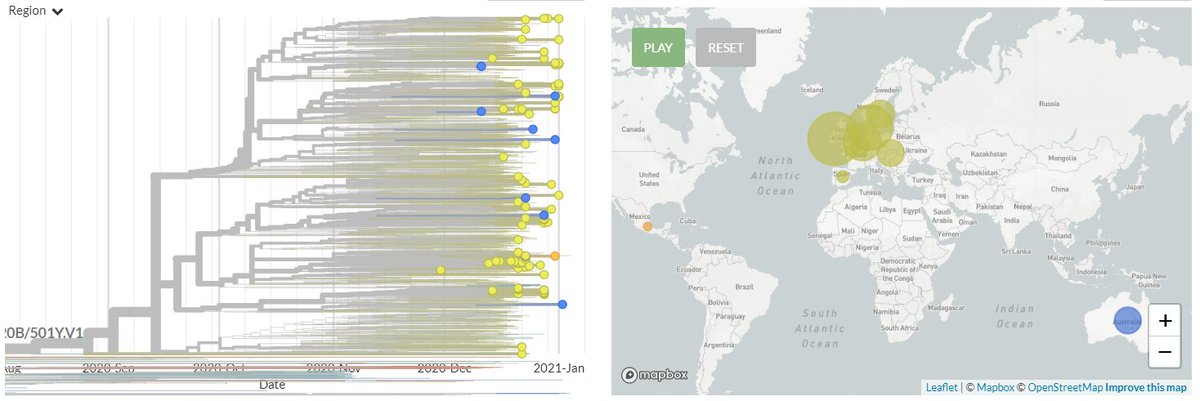
Slovakia has 10 sequences that fall in 501Y.V1 for the first time. These are closely linked, & likely indicate a single introduction and ongoing transmission (remember: vertical distance is not meaningful on the same branch - position of the 2 English samples is arbitrary).
3/20

3/20
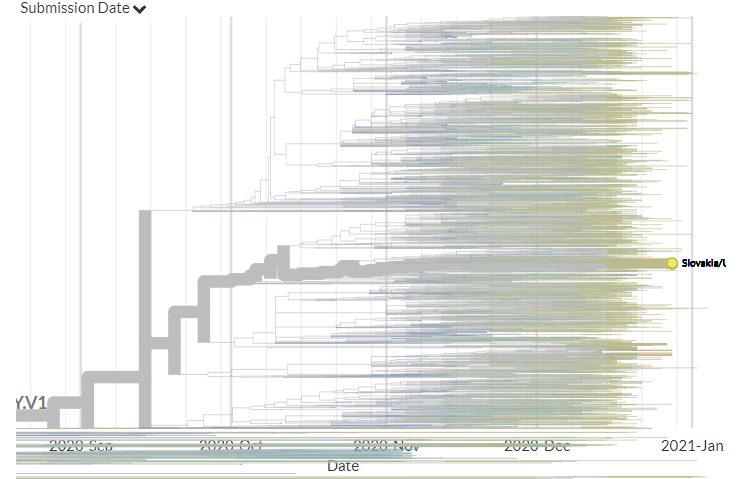
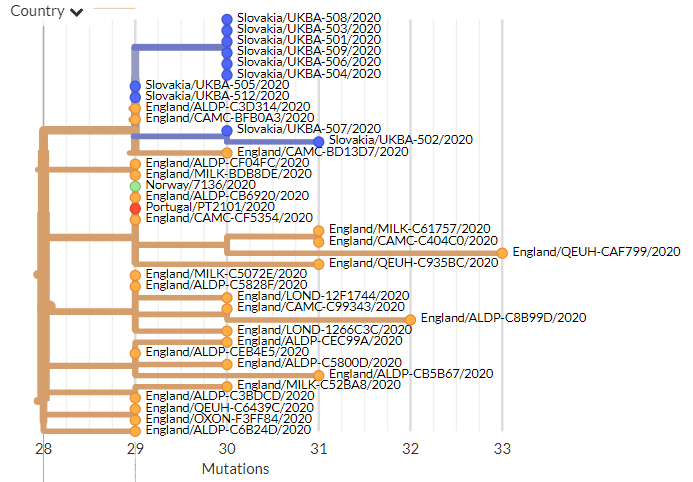
Belgium has 5 sequences in 501Y.V1 for the 1st time, indicating 3 separate intros. 3 seqs cluster together (zoomed, divergence), indicating a single introduction. The connection to Netherlands might indicate transmission, or 2 transmissions from same diversity in the UK.
4/20

4/20

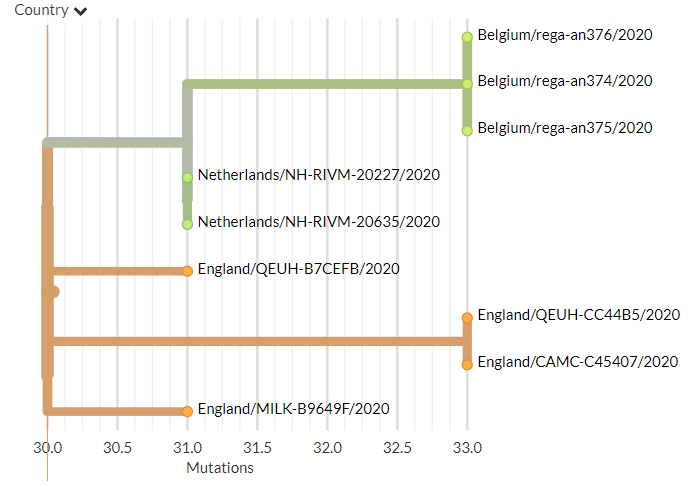
Ireland has 36 new sequences. Many represent separate introductions, but some do cluster with older sequences & may represent local transmission, or introductions from the same UK diversity.
6/20


6/20
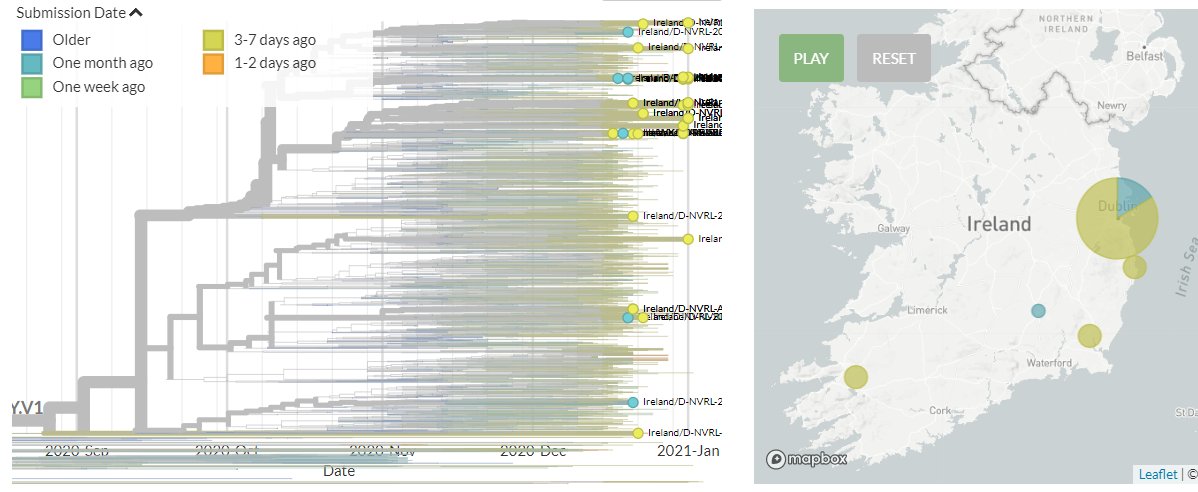
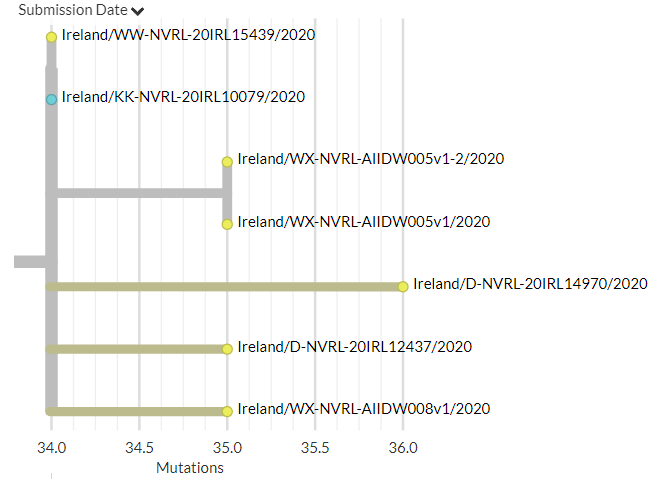
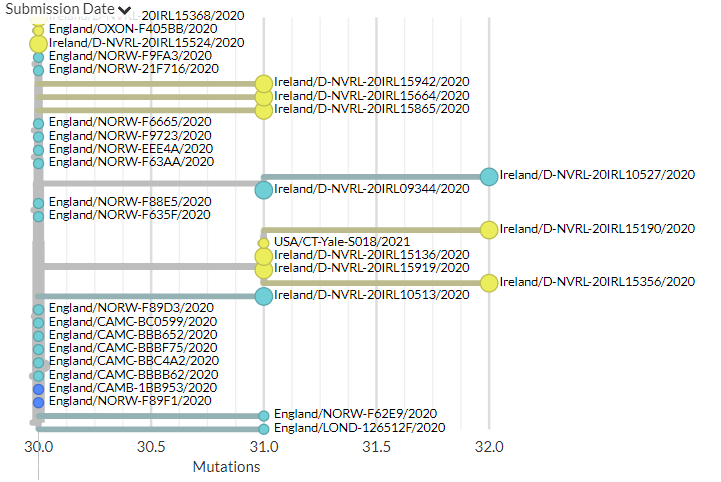
Denmark has 29 new sequences (orange). These represent both new introductions, and further expansion of the large cluster (zoomed view).
7/20

7/20


The Netherlands have 6 new sequences. All fall within the section of the tree marked in red.
Zooming in, the new sequences are marked in red: 2 are separate introductions. Zooming in further (divergence view), cluster at the top are identical to an older sequence.
8/20


Zooming in, the new sequences are marked in red: 2 are separate introductions. Zooming in further (divergence view), cluster at the top are identical to an older sequence.
8/20
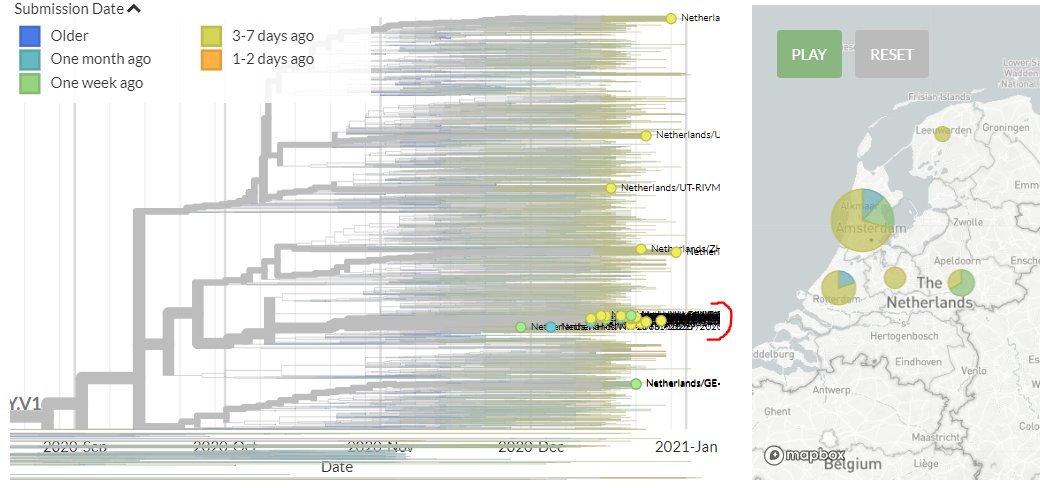
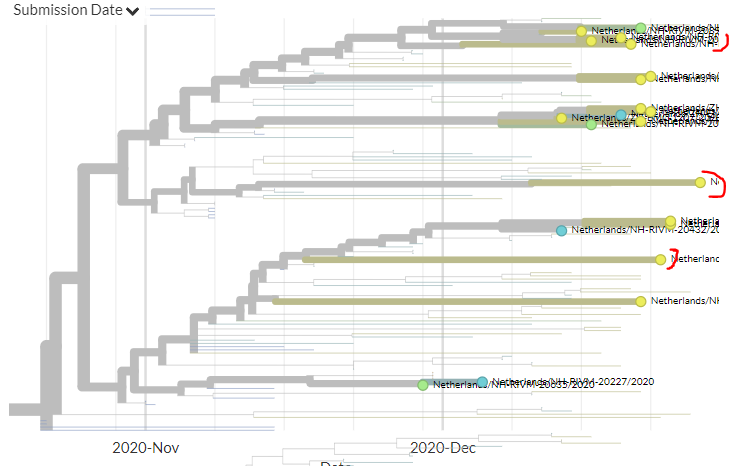
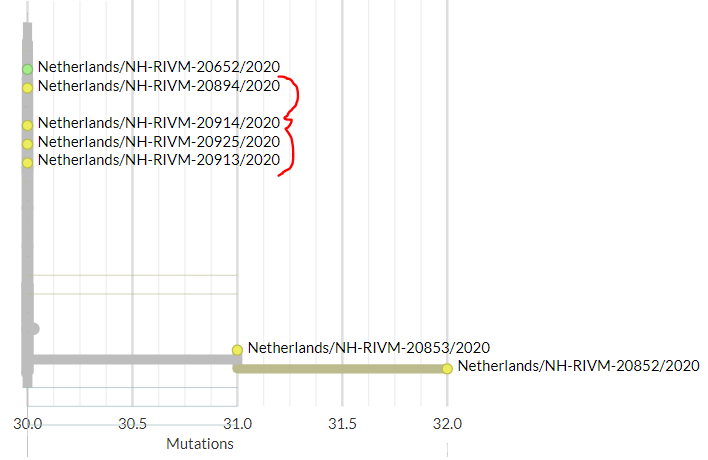
Australia has 6 new sequences, including the first from Northern Territory and Victoria. 1 pair of sequences from Victoria are identical to each other, representing one introduction.
9/20

9/20
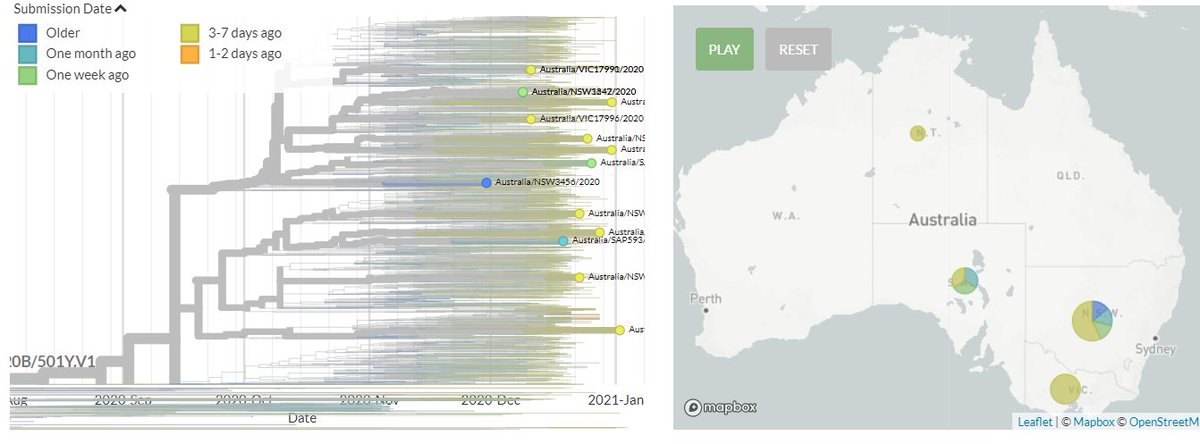

Spain has 2 new sequences (yellow). One represents a separate introduction. The other links to older Spanish sequences, but it's unclear from sequences alone if this is local transmission or transmissions from a common source.
10/20

10/20
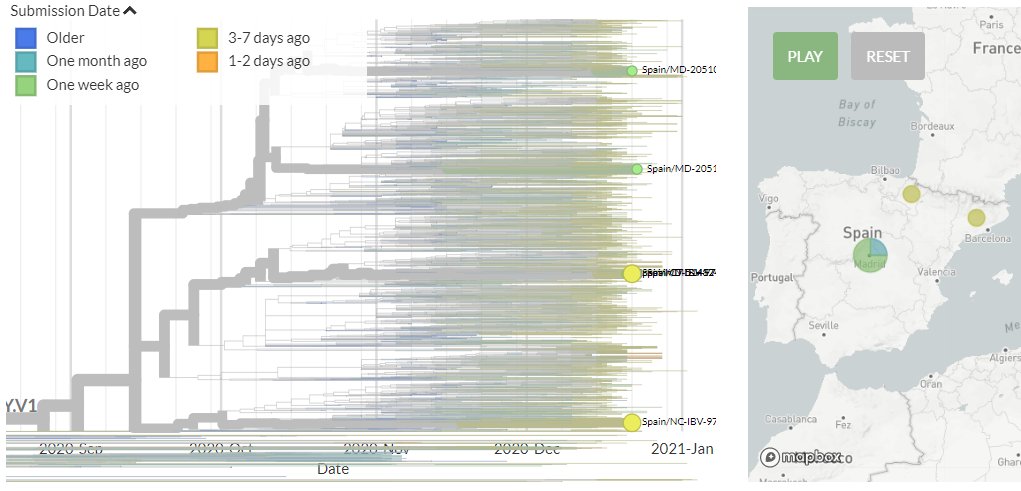
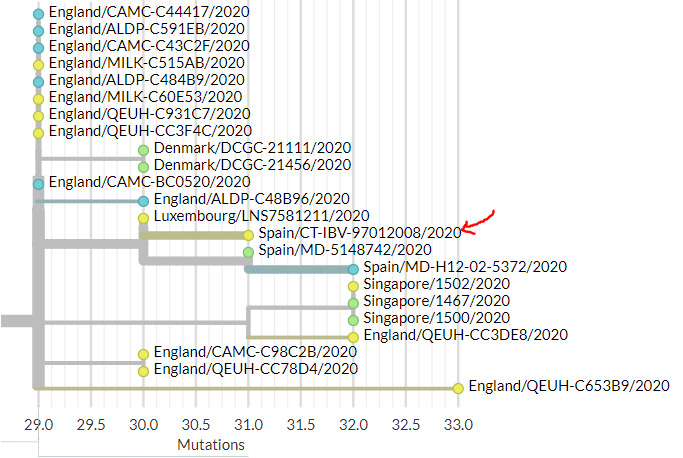
Sweden has 2 new sequences, marked in red. Both represent independent introductions. The second one is hard to see, but zooming in shows this more clearly.
11/20

11/20
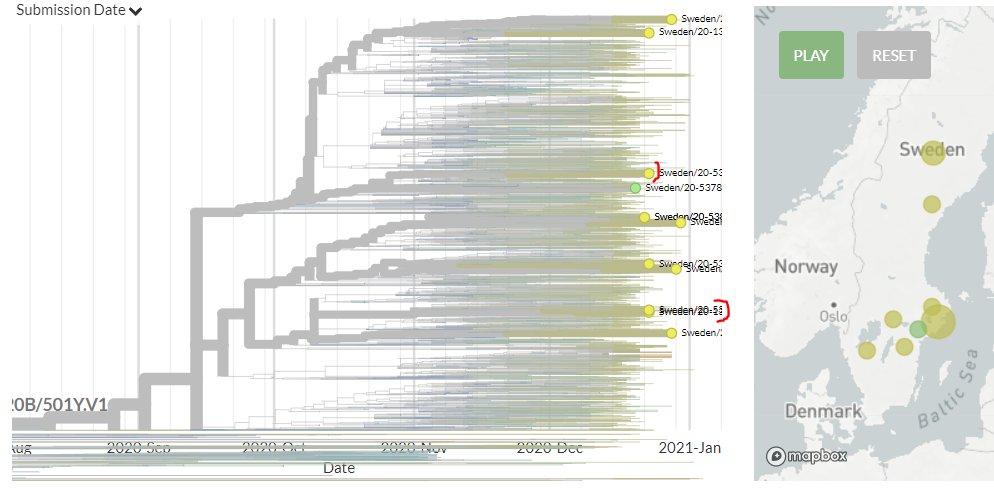
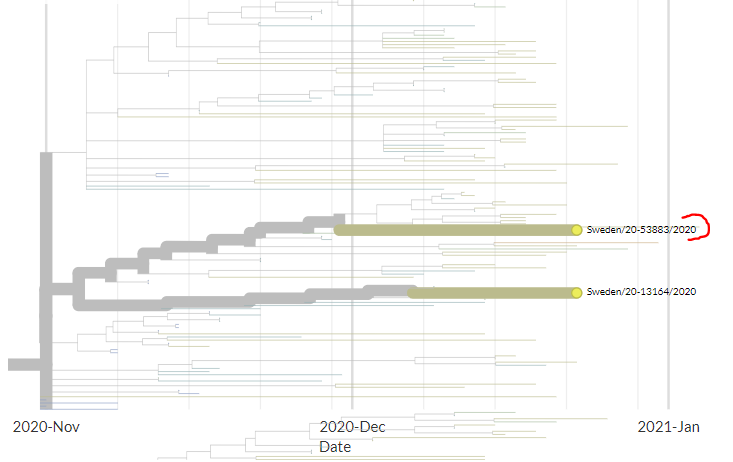
Now turning to 501Y.V2:
There are 4 new non-South African sequences in 501Y.V2, including the first from Ireland (3) and the Netherlands (1).
12/20
There are 4 new non-South African sequences in 501Y.V2, including the first from Ireland (3) and the Netherlands (1).
12/20
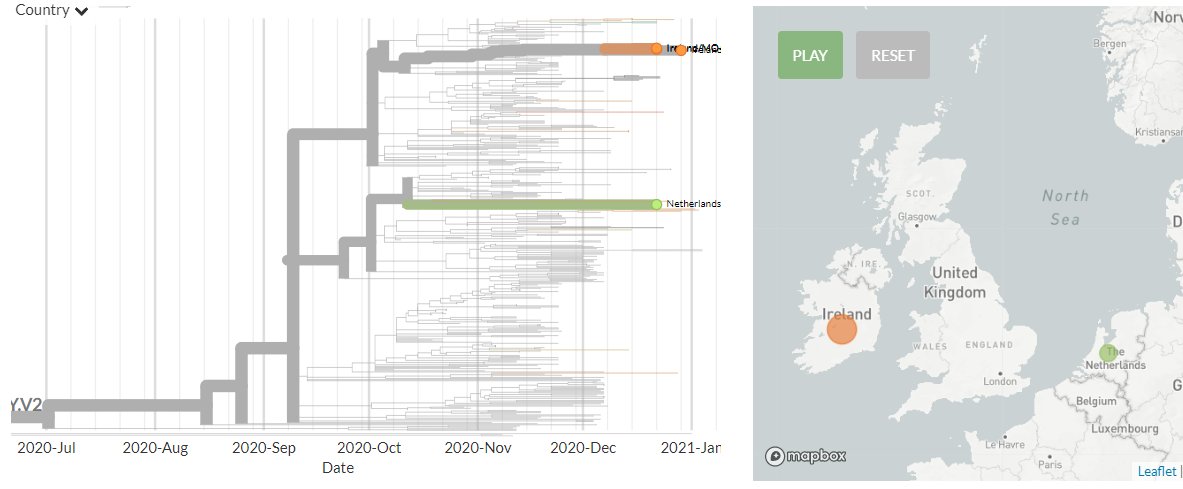
Ireland has 3 sequences in 501Y.V2 for the first time. They cluster together, and may indicate either local transmission, or a common exposure (pictures 1 & 2).
The Netherlands has its first sequence in 501Y.V2 (picture 3).
13/20


The Netherlands has its first sequence in 501Y.V2 (picture 3).
13/20

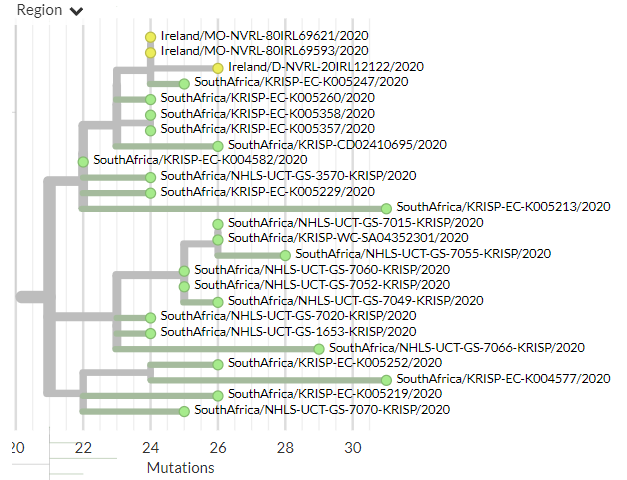
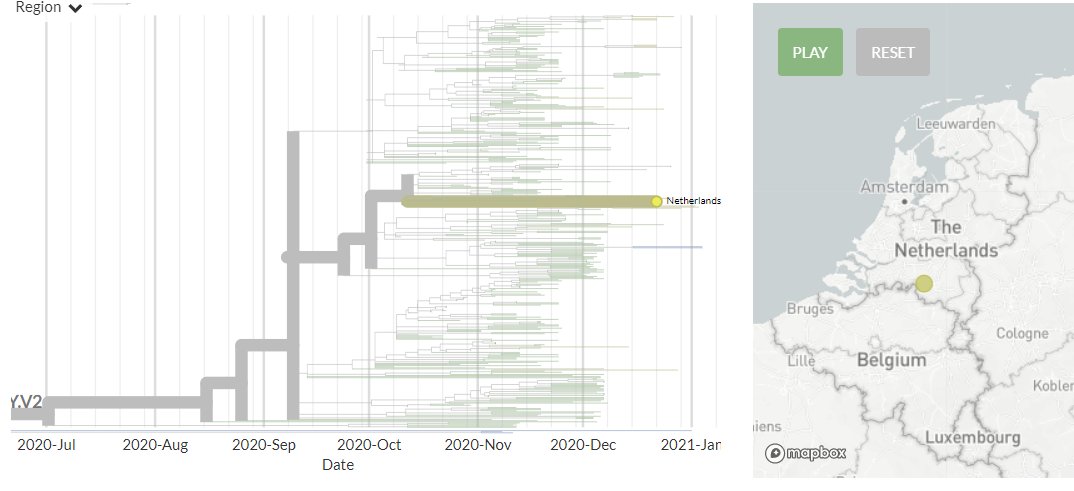
As usual, the updated country graphs are also available. As always, interpret with care: countries are selectively sequencing to track 501Y.V1, so proportions of sequences are not representative for many countries.
14/20
github.com/hodcroftlab/co…
14/20
github.com/hodcroftlab/co…
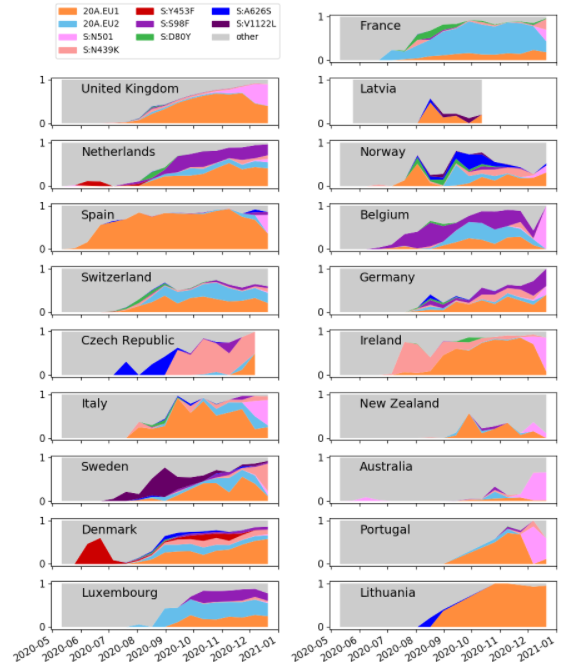
Finally, an updated focal S:E484 build is also up.
S:E484K is found predominantly in the 501Y.V2 variant, & in a cluster of sequences primarily in Brazil, though it has appeared numerous times in the past.
15/20
nextstrain.org/groups/neherla…
S:E484K is found predominantly in the 501Y.V2 variant, & in a cluster of sequences primarily in Brazil, though it has appeared numerous times in the past.
15/20
nextstrain.org/groups/neherla…
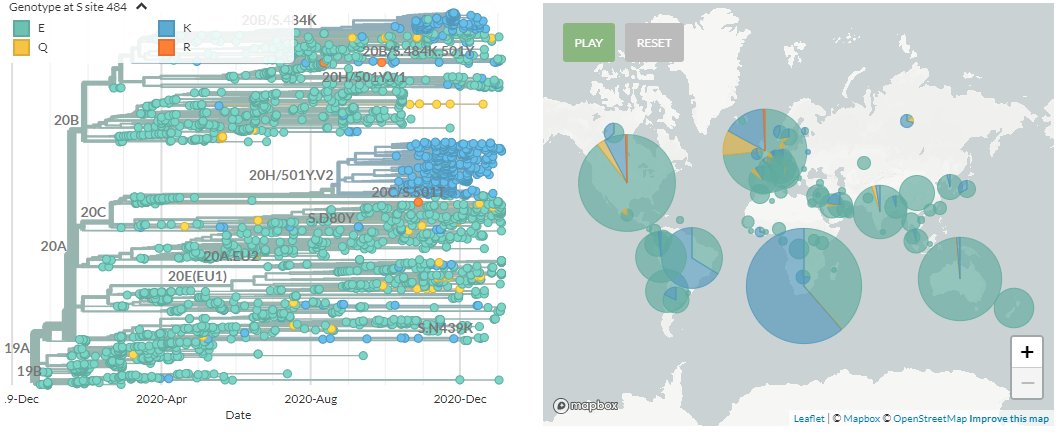
S:E484K has been discussed recently as there are suggestions it may impact how well the immune system can recognise the virus, particularly if you've been infected with SARS-CoV-2 before.
Links to the studies are on CoVariants.org/#se484
16/20
Links to the studies are on CoVariants.org/#se484
16/20
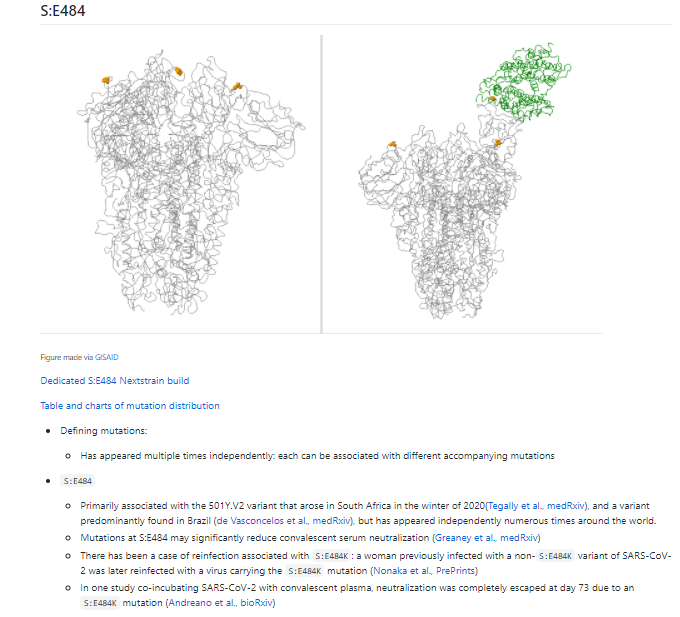
Additionally, over the weekend, travellers from Brazil to Japan were found to be infected with a novel variant with many mutations, including S:E484K & S:N501Y.
Translated report linked below.
17/20
translate.google.com/translate?sl=j…
Translated report linked below.
17/20
translate.google.com/translate?sl=j…
To help viewers identify these new samples from Japan, I've added a *temporarily* label to the S:E484K build: 20B/S.484K.501Y.
Additionally, I've added a *temporary* label to the Brazilian cluster with S:E484K: 20B/S.484K.
18/20

Additionally, I've added a *temporary* label to the Brazilian cluster with S:E484K: 20B/S.484K.
18/20
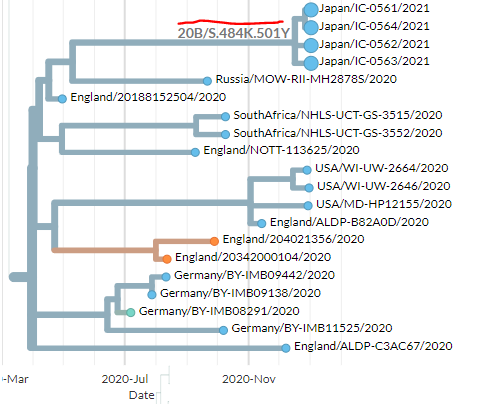
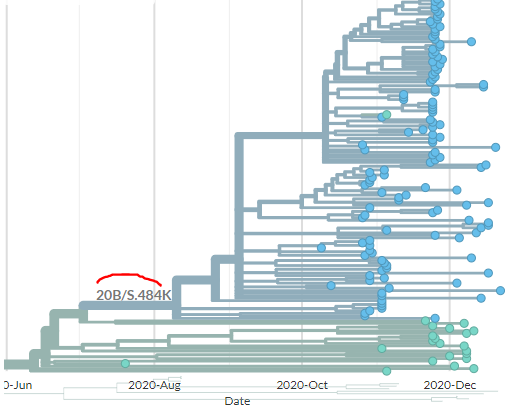
Interestingly, though the recent Japanese sequences carry S:E484K & seem to originate from Brazil, they do *not* branch from the larger 484K cluster in Brazil, but instead sit on a long branch separately within the 20B Clade.
19/20
19/20
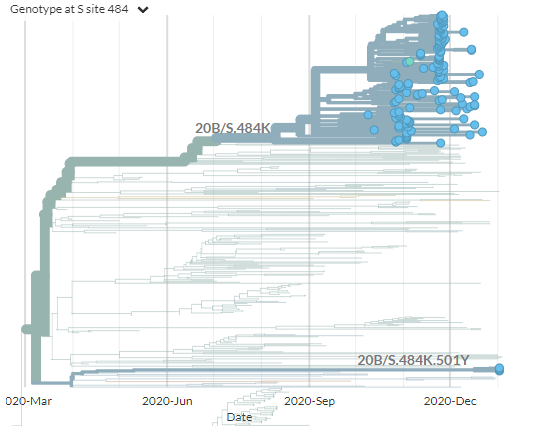
Getting case numbers down saves #LivesAndLivelihoods, and reduces #SARSCoV2's opportunities to explore situations with unique selection pressures, potentially resulting in mutations expanding that we'd rather not see.
Help make my updates more boring: bring cases down!
20/20
Help make my updates more boring: bring cases down!
20/20
More information on the Belgian sequences here:
https://twitter.com/GuyBaele/status/1348726853876535296
PS - For related but slightly-different-angle updates on 501Y.V1 (B.1.1.7) & 501Y.V2 (B.1.351), you should follow @AineToole & keep an eye on her tweets about updated reports!
21/20
https://twitter.com/AineToole/status/1348715920366194689
21/20
To learn more about the new variant that was found in sequences from Japan (484K+501Y) earlier in the thread, be sure to check out this great post from @nmrfaria & @CaddeProject.
This is a variant circulating in Manaus, Brazil
22/20
virological.org/t/genomic-char…
This is a variant circulating in Manaus, Brazil
22/20
virological.org/t/genomic-char…
• • •
Missing some Tweet in this thread? You can try to
force a refresh






